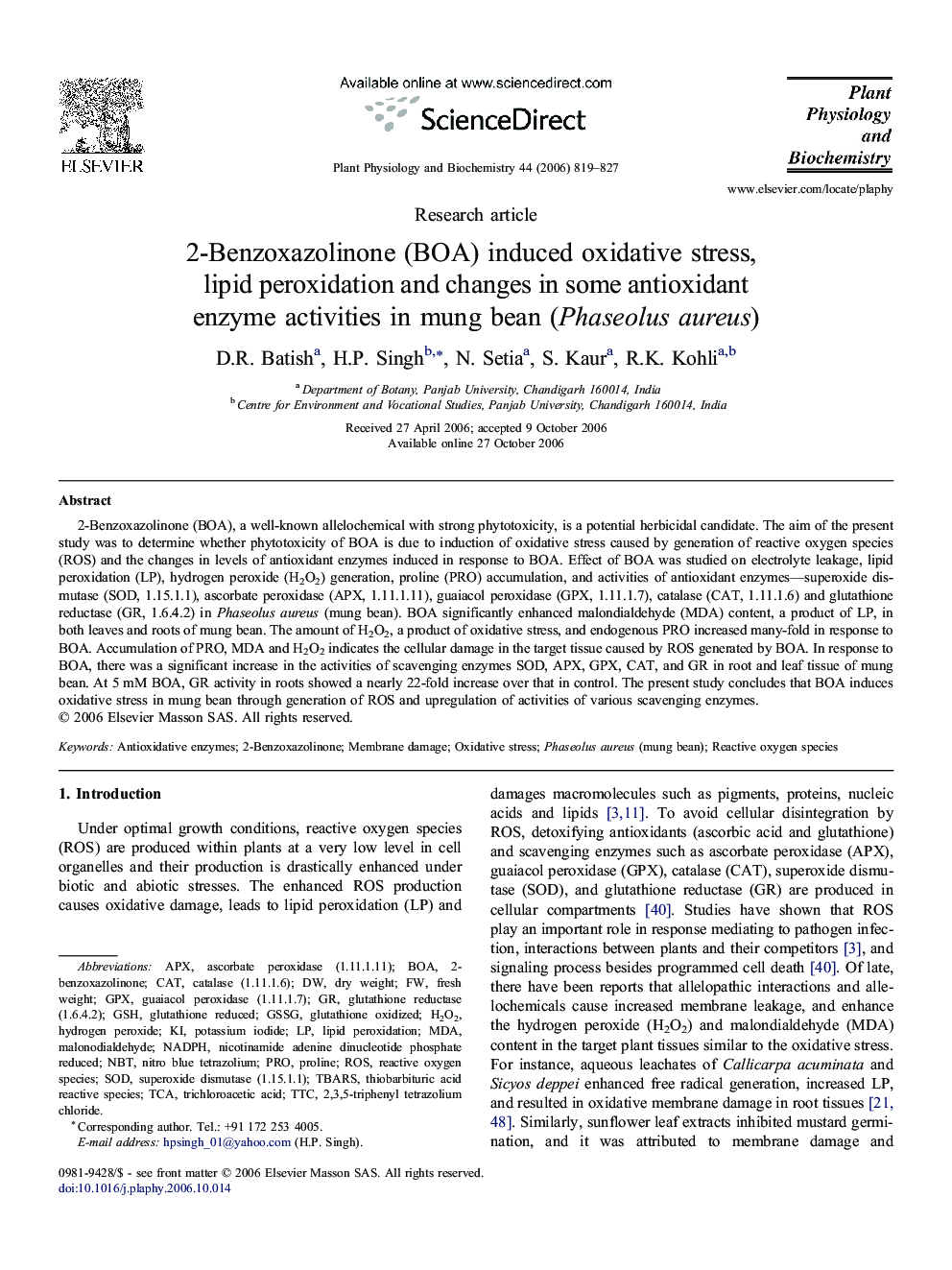| Article ID | Journal | Published Year | Pages | File Type |
|---|---|---|---|---|
| 2016623 | Plant Physiology and Biochemistry | 2006 | 9 Pages |
2-Benzoxazolinone (BOA), a well-known allelochemical with strong phytotoxicity, is a potential herbicidal candidate. The aim of the present study was to determine whether phytotoxicity of BOA is due to induction of oxidative stress caused by generation of reactive oxygen species (ROS) and the changes in levels of antioxidant enzymes induced in response to BOA. Effect of BOA was studied on electrolyte leakage, lipid peroxidation (LP), hydrogen peroxide (H2O2) generation, proline (PRO) accumulation, and activities of antioxidant enzymes—superoxide dismutase (SOD, 1.15.1.1), ascorbate peroxidase (APX, 1.11.1.11), guaiacol peroxidase (GPX, 1.11.1.7), catalase (CAT, 1.11.1.6) and glutathione reductase (GR, 1.6.4.2) in Phaseolus aureus (mung bean). BOA significantly enhanced malondialdehyde (MDA) content, a product of LP, in both leaves and roots of mung bean. The amount of H2O2, a product of oxidative stress, and endogenous PRO increased many-fold in response to BOA. Accumulation of PRO, MDA and H2O2 indicates the cellular damage in the target tissue caused by ROS generated by BOA. In response to BOA, there was a significant increase in the activities of scavenging enzymes SOD, APX, GPX, CAT, and GR in root and leaf tissue of mung bean. At 5 mM BOA, GR activity in roots showed a nearly 22-fold increase over that in control. The present study concludes that BOA induces oxidative stress in mung bean through generation of ROS and upregulation of activities of various scavenging enzymes.
